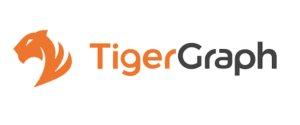
TigerGraph Unveils ML Workbench, Winners of Its ‘Graph For All Million Dollar Challenge’

Graph analytics platform TigerGraph has just released its new TigerGraph ML Workbench, a Jupyter-based Python development framework.
TigerGraph says this machine learning toolkit “enables data scientists to significantly improve ML model accuracy, shorten development cycles, and deliver more value to the business while using familiar tools, workflows, and libraries in a single environment that easily plugs into existing data pipelines and ML infrastructure.”
The company says TigerGraph ML Workbench will allow data scientists to build deep learning AI models using connected data through graph-enabled ML, which they say has more accurate predictive power than a traditional ML approach. This is seen the most in node prediction applications such as fraud, and edge prediction applications like product recommendations. Graph-enhanced ML and graph neural networks, fully integrated with the TigerGraph database, can quickly be used for parallelized graph data processing. The ML Workbench was designed to interoperate with PyTorch, PyTorch Geometric, DGL, and TensorFlow so that users can choose which deep learning framework they prefer. TigerGraph also says its ML Workbench is plug-and-play ready for Amazon SageMaker, Microsoft Azure ML, and Google Vertex AI.
 “Graph has proven to accelerate and improve ML learning and performance, but the learning curve to use the APIs and libraries to make that happen has proven very steep for many data scientists,” said Victor Lee, vice president of machine learning and AI at TigerGraph. “So we created ML Workbench to provide a new functional layer between the data scientists and the graph machine learning APIs and libraries to facilitate data storage and management, data preparation, and ML training. In fact, we have seen early adopters gaining a 10 to 50% increase in the accuracy of their ML models as a result of using ML Workbench and TigerGraph.”
“Graph has proven to accelerate and improve ML learning and performance, but the learning curve to use the APIs and libraries to make that happen has proven very steep for many data scientists,” said Victor Lee, vice president of machine learning and AI at TigerGraph. “So we created ML Workbench to provide a new functional layer between the data scientists and the graph machine learning APIs and libraries to facilitate data storage and management, data preparation, and ML training. In fact, we have seen early adopters gaining a 10 to 50% increase in the accuracy of their ML models as a result of using ML Workbench and TigerGraph.”
Since the ML Workbench is designed to work with enterprise-level data, it is highly scalable and can be used with very large graphs. TigerGraph lists ML Workbench’s built-in capabilities as the following: TigerGraph DB’s distributed storage and massively parallel processing, graph-based partitioning to generate training/validation/test graph data sets, graph-based batching for GNN mini-batch training to improve performance and reduce hardware requirements, and sub-graph sampling to support leading edge GNN modeling techniques.
ML Workbench is compatible with TigerGraph 3.2 and later and is available as a fully managed cloud service or for on-prem use. The product is currently in preview and will be generally available in June 2022. Those interested in learning more can visit this link.
In addition to ML Workbench, TigerGraph also unveiled the winners of its Graph for All Million Dollar Challenge at its Graph + AI Summit. The company awarded $1 million to “game-changing, graph-powered projects that analyze and address many of today’s biggest global social, economic, health, and climate-related concerns.” Winning projects were hand selected by the global judging committee out of 1,500 registrations from over 100 countries.
 The $250K Grand Prize went to Mental Health Hero, an application created to provide increased access to personalized mental health treatment. Other winners include Biodex, a gamified natural image identification application that contributes biodiversity information for research, and Diagnosx, a women-led application that presents a 3D model of a patient’s diagnosis and medical history and is designed to decrease disparities in doctor/patient communication. Visit this link for a full list of winners.
The $250K Grand Prize went to Mental Health Hero, an application created to provide increased access to personalized mental health treatment. Other winners include Biodex, a gamified natural image identification application that contributes biodiversity information for research, and Diagnosx, a women-led application that presents a 3D model of a patient’s diagnosis and medical history and is designed to decrease disparities in doctor/patient communication. Visit this link for a full list of winners.
“From addressing mental health issues to supporting Ukrainian refugees to predicting how supply shocks will spread through the world economy, the submissions we received tackle real-world concerns and demonstrate innovative approaches to resolving them with graph technology,” said Dr. Yu Xu, founder and CEO of TigerGraph. “We wanted to create a challenge that produced new and innovative applications of graph technology and the global community did just that. The overwhelming focus on global issues in this challenge shows that regardless of geography, we all share many of the same concerns and challenges, and that graph technology can help address them.”
Related Items:
A Million Dollars Up for Grabs in TigerGraph Challenge
TigerGraph Bolsters Scalability with Graph Database Update
Graph Databases Gaining Enterprise-Ready Features































